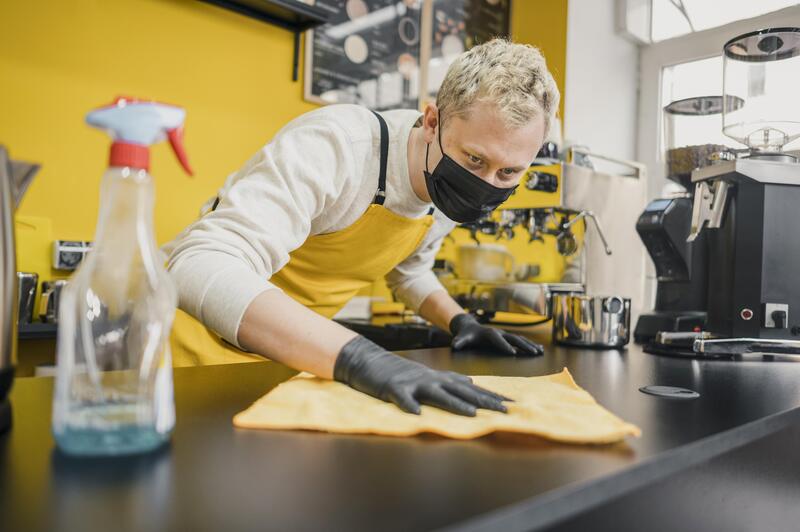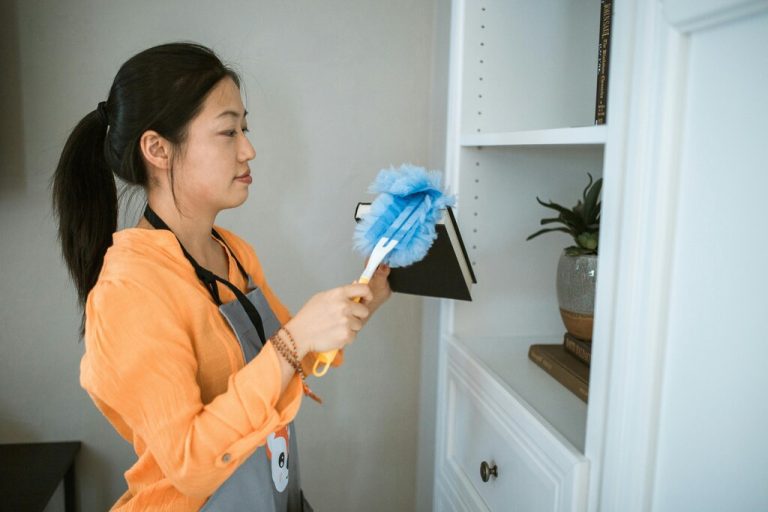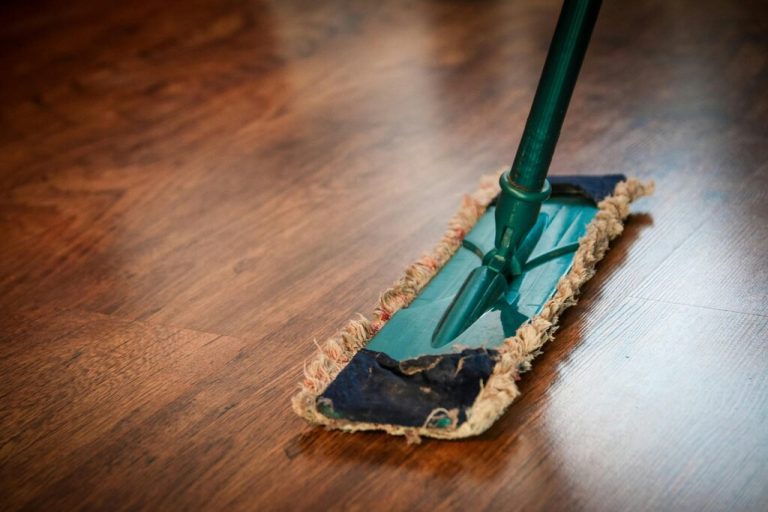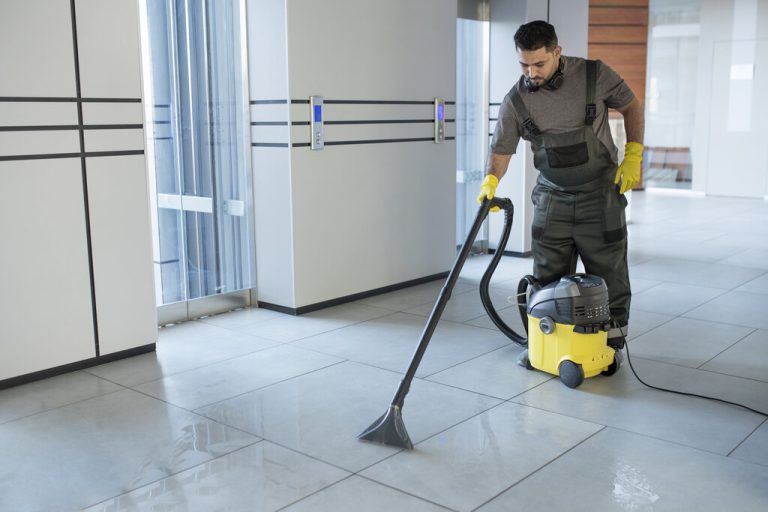Maintaining a clean and sanitary environment in a commercial kitchen is crucial for the health and safety of both customers and staff. Given this urgency, it’s essential for you to have a commercial kitchen cleaning checklist.
A commercial kitchen cleaning checklist is a valuable tool that ensures every area of the kitchen is thoroughly cleaned and sanitized on a regular basis. From kitchen equipment and surfaces to storage areas and restrooms, this checklist covers all essential cleaning tasks that need to be completed.
In this article, we will explore the commercial kitchen cleaning checklist in detail, including which areas should be covered, the specifics of the checklist, tips for following it effectively, and the benefits of using it.
Let’s dive into the commercial kitchen cleaning checklist and learn how to keep your commercial kitchen in top condition!
Areas Should Be Included in a Commercial Kitchen Cleaning Checklist
A thorough commercial kitchen cleaning checklist should address all crucial areas to guarantee thorough cleanliness and upkeep, including:
a. Kitchen Equipment and Appliances
Cleaning kitchen equipment and appliances in an industrial kitchen involves thorough sanitisation of utensils, ovens, grills, and other essential devices to maintain optimal cleanliness and functionality.
In terms of utensils, soaking them in a mixture of hot water and washing up liquid is an effective way to remove grease and food residues.
For ovens, a combination of bicarbonate of soda and water paste can be used to scrub away burnt-on stains.
Grills should be cleaned with a wire brush after each use to prevent the build-up of carbonised food particles.
Regularly degreasing and sanitising these appliances not only ensures a hygienic cooking environment but also extends their lifespan, saving on costly repairs or replacements in the long run.
b. Surfaces and Countertops
Surfaces and worktops should be sanitised daily to ensure hygiene and prevent the spread of contaminants in a commercial kitchen.
Implementing specific practices for cleaning and sanitising these surfaces is crucial for maintaining a safe environment for food preparation. One effective method is using a mixture of water and a sanitising solution approved for kitchen use. This solution should be applied with clean cloths or disposable wipes, ensuring thorough coverage across all surfaces. Regularly scheduled deep cleaning sessions can help eliminate built-up grime and bacteria that may not be removed in daily sanitising routines.
c. Floors and Walls
Maintaining the cleanliness of floors and walls in a restaurant kitchen is essential to prevent slips, falls, and the accumulation of grime and grease.
Regular cleaning routines should involve sweeping, mopping, and wiping down all surfaces to keep them free of dirt and spills. Using disinfectants and degreasers on a scheduled basis will ensure that pathogens and tough stains are thoroughly eliminated. One should also pay close attention to high-traffic areas and corners that tend to collect more debris.
A weekly deep clean can involve scrubbing floors and walls, ensuring that hidden grime is removed. By adhering to these cleaning practices diligently, kitchen staff can create a safe and hygienic environment for food preparation.
d. Storage Areas
Regular cleaning and maintenance of storage areas are vital to ensure food safety and prevent contamination, which contributes to overall cleanliness in a commercial kitchen.
In a commercial kitchen setting, cleaning storage areas involves a series of specific tasks that must be diligently carried out. This includes:
- Emptying and organising storage units
- Wiping down shelves
- Checking for signs of pests
- Disposing of expired or spoiled items promptly
By keeping storage areas clean, food items are less likely to be exposed to harmful bacteria or contaminants, safeguarding the health of customers and maintaining compliance with food safety regulations. Maintaining cleanliness in these areas not only enhances the efficiency of kitchen operations but also upholds the reputation of the establishment as a hygienic and safe place to dine.
e. Dishwashing and Sanitising Areas
Dishwashing and sanitising areas should be cleaned thoroughly to ensure that all utensils and equipment are hygienic and ready for use.
Regular cleaning tasks in these areas involve:
- Scrubbing sinks, counters, and surfaces with hot, soapy water to remove food residue and grease build-up.
- Cleaning and sanitising sponges, cloths, and brushes to prevent cross-contamination.
- Thoroughly washing, rinsing, and sanitising utensils and equipment, such as cutting boards and knives, after each use.
f. Toilets
Maintaining the cleanliness of restrooms is crucial for customer satisfaction and overall hygiene in a commercial kitchen environment.
Regular cleaning tasks in restrooms, such as wiping down surfaces, disinfecting toilets, and restocking supplies, should be performed multiple times throughout the day to ensure a high standard of cleanliness.
By scheduling routine deep cleanings, including scrubbing floors, cleaning grout, and sanitising all touchpoints, establishments can uphold a pristine environment that reflects positively on their hygiene standards and leaves a lasting impression on customers.
g. Dining Area
Regular cleaning of the dining area is essential to ensure a pleasant experience for customers and to meet hygiene guidelines.
In the dining area, tasks such as wiping down tables and chairs, sweeping, and mopping floors, dusting surfaces, and cleaning windows play a crucial role in maintaining a welcoming atmosphere. Ensuring that condiment stations are well-stocked and clean and that menus are sanitised regularly, can make a significant impact on customer satisfaction.
Paying attention to details like polishing cutlery, refilling napkin dispensers, and tidying up any clutter can contribute to a positive dining experience. Cleanliness not only enhances the visual appeal but also prevents the spread of germs, creating a safer dining environment for everyone.
Details of a Commercial Kitchen Cleaning Checklist
The details of a commercial kitchen cleaning checklist include a comprehensive list of cleaning tasks categorised into daily, weekly, and monthly routines to ensure thorough cleanliness and maintenance.
a. Daily Cleaning Tasks
Daily cleaning tasks involve routine actions such as sanitising surfaces, washing utensils, and ensuring all cooking and preparation areas are clean by the end of the day.
Emptying and disinfecting rubbish bins is another essential part of maintaining a clean environment, as these can quickly become breeding grounds for bacteria and odours if neglected.
Regularly cleaning and restocking toilet facilities is crucial for the well-being of both employees and customers, ensuring a pleasant and hygienic experience for all.
It’s also important to wipe down commonly touched surfaces, such as door handles and light switches, to prevent the spread of germs.
b. Weekly Cleaning Tasks
Weekly cleaning tasks include deep cleaning of kitchen equipment, thorough scrubbing of floors and walls, and detailed maintenance checks.
Deep cleaning of kitchen equipment involves dismantling appliances to clean hard-to-reach areas, descaling coffee makers, and degreasing oven interiors.
Scrubbing floors and walls helps eliminate dirt, grease, and food residue that can harbour harmful bacteria and cause unpleasant odours in the kitchen.
Regular maintenance checks ensure that appliances are functioning efficiently, reducing the risk of breakdowns and prolonging their lifespan.
c. Monthly Cleaning Tasks
Monthly cleaning tasks involve extensive cleaning activities and maintenance inspections to address areas that are not part of the daily or weekly routine.
These monthly tasks go beyond the regular tidying up and involve deeper cleaning of often neglected areas such as skirting boards, vents, and behind appliances. It’s crucial to conduct thorough inspections during these monthly cleanings to catch any potential issues early on before they escalate.
This preventive maintenance can save time and money in the long run by identifying problems like leaks or mould growth. Alongside these cleaning activities, less frequent but necessary maintenance tasks, like changing air filters or testing smoke detectors, should not be overlooked.
Some Tips for Following a Commercial Kitchen Cleaning Checklist
To follow a commercial kitchen cleaning checklist effectively requires strategic planning, clear guidelines, and regular maintenance to ensure all tasks are completed efficiently and thoroughly.
a. Create a Schedule
Creating a schedule for cleaning tasks helps ensure that all necessary actions are planned and executed systematically.
By establishing a routine to follow, individuals or teams can allocate specific time slots for different cleaning tasks, increasing efficiency and productivity.
An effective cleaning schedule not only prevents the accumulation of dirt and clutter but also reduces stress by providing a clear roadmap of what needs to be done and when.
It also helps in maintaining hygiene standards, creating a healthier environment for everyone.
An organised schedule allows for better utilization of resources and ensures that cleaning tasks do not interfere with other important responsibilities or activities.
b. Assign Tasks to Specific Employees
Assigning specific cleaning tasks to employees ensures accountability and a clear division of responsibilities within the staff.
Delegating tasks also fosters a sense of ownership among team members, enabling them to take charge of their duties and deliver results efficiently. By assigning tasks based on individual strengths and expertise, employers can maximise productivity and improve overall job satisfaction. Clear communication about task assignments helps avoid misunderstandings and ensures that everyone is on the same page regarding their roles. Regularly reviewing delegated tasks and providing constructive feedback can further enhance performance and motivation among employees.
c. Use Appropriate Cleaning Products
Using appropriate cleaning products is essential for effectively cleaning different surfaces and adhering to hygiene guidelines.
In terms of cleaning, it’s important to use the right products for the job. For general surfaces like worktops and floors, mild household cleaners are typically suitable. These cleaners effectively remove dirt and grime without causing damage. For tougher stains or grease buildup in kitchens, stronger degreasers may be necessary. When cleaning delicate surfaces like granite or marble, it’s best to opt for specialised cleaners designed specifically for those materials to prevent any damage.
d. Regularly Inspect and Update the Checklist
Regularly inspecting and updating the cleaning checklist ensures it remains relevant and effective in maintaining kitchen hygiene and cleanliness.
Periodic inspections are crucial in identifying any gaps or overlooked areas that might compromise the overall cleanliness standards. By revisiting the checklist regularly, you have the opportunity to address any emerging issues promptly.
Updating the checklist allows you to integrate new cleaning practices or tools that can further enhance the effectiveness of your cleaning routine. Keep an eye out for any changes in regulations or best practices that should be reflected in the checklist.
Here’s the commercial kitchen cleaning checklist, covering daily, weekly, and monthly tasks for you to follow. However, keeping your commercial kitchen in pristine condition requires more than just following a checklist.
To ensure your kitchen meets health and safety standards and operates efficiently, rely on the experts at TEKA Cleaning. Our specialised commercial cleaning services offer thorough and professional kitchen cleaning that goes beyond routine tasks, addressing every detail to maintain a spotless and hygienic environment.
Don’t compromise on cleanliness and safety! Contact TEKA Cleaning at 01233 751 544 to book a comprehensive cleaning service for your commercial kitchen today. Ensure your kitchen remains in top shape, prevent potential issues, and focus on what matters most: delivering exceptional dining experiences to your customers. Act now to maintain the highest standards in your kitchen!
Read also:











